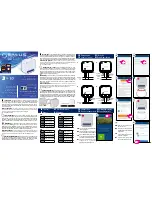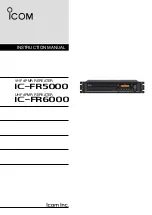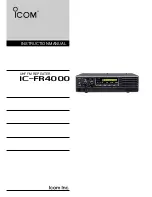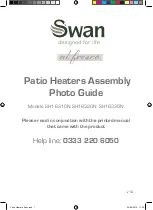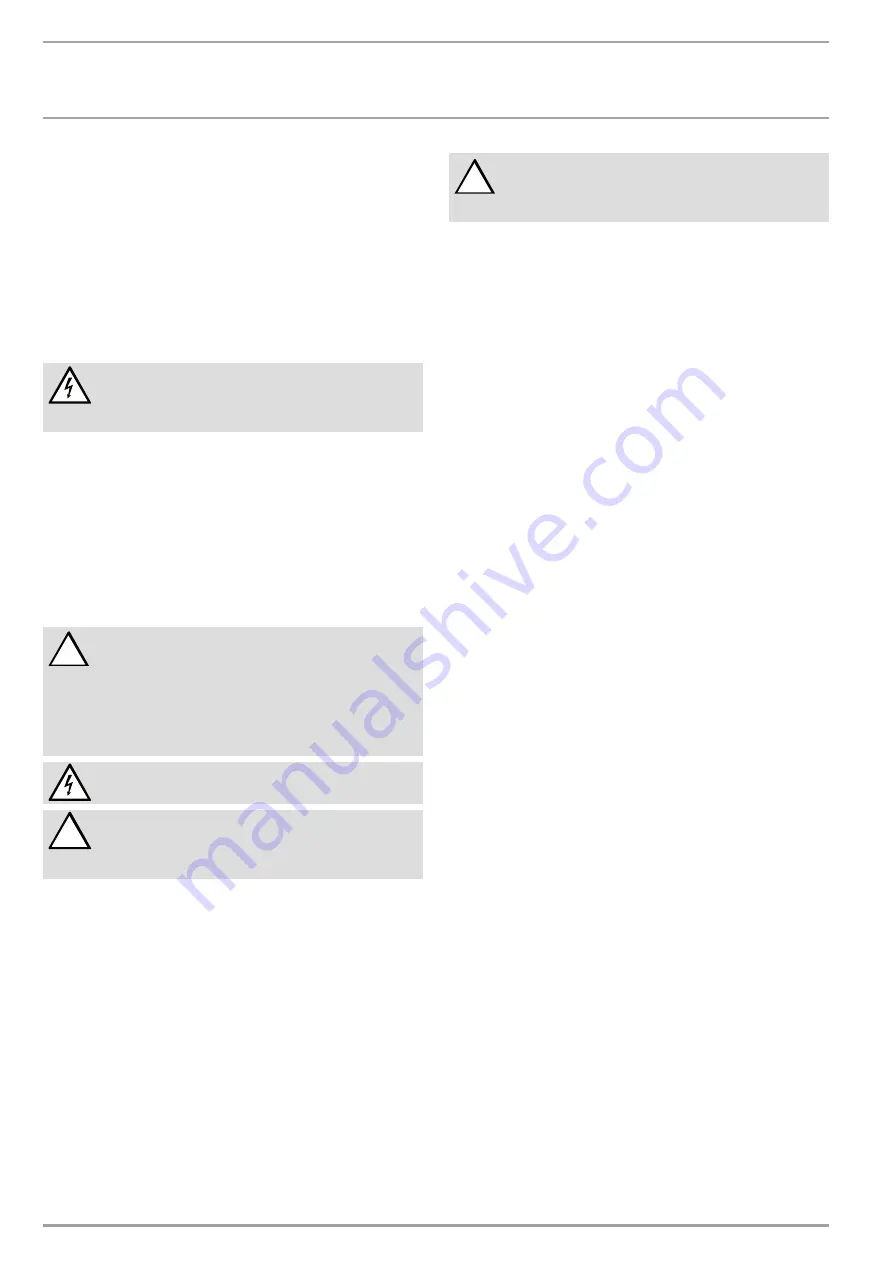
INsTAllATION
cOmmIssIONING
36
|ETW 120, 180, 240, 300, 360, 420, 480 electronic
www.stiebel-eltron.com
10.7 Power connection
(see chapter "Specification – connection options")
The power connection of the heating elements is made with
3/N/PE~400 V, or for appliances ETW 120 and 180 also with 1/N/
PE~230V.
The connection with NYM is possible. The number of power supply
cables, conductors and cross-sections depends on the connected
load of the appliance and the type of power connection, as well
as on special regulations from the power supply utility. For this,
observe the relevant wiring diagrams.
Danger of electrocution!
If the appliance is connected to an automatic charge
control system, there may be voltage at terminals
A1/Z1 and A2/Z2 even if the fuses have been removed.
10.7.1 Supply
If necessary, apply strain relief to the power cables and connect
according to the wiring diagram inside the appliance (on the inside
of the r.h. side panel), or according to the connection diagram in
the chapter "Specification".
If the bracket in the control panel for mounting the mains terminals
is not easily accessible because the side clearance is inadequate,
the bracket can be pivoted forwards during installation after
undoing (do not remove) the screw in the back panel.
!
Note
Voltage (230 V) must be present at terminal "L" of
terminal strip X2 during the charge time. If there is
no separate power supply available for this, terminal
"L1" can be bridged with "L". In this case, bridge
terminal "N" of terminal strip X2 with terminal "N"
of terminal strip X1 (only possible for wall mounted
thermostats).
Danger of electrocution!
Ensure the earth conductor is perfectly connected.
!
Risk of damage
Prior to connection, insulate the cable for the DC
control signal connection with a sheath inside the
appliance, i.e. from the strain relief to the terminal.
10.7.2 Control without heating contactor
If a heating contactor is not installed (may be required by the
power supply utility), the thermal relay inside the storage heater
fitted at the factory can be used.
For this, connect either the power supply utility signals "LF+N"
or the signals "SH+N" of the relevant charge control system
directly to the terminals "L-SH+N" of the storage heater. Observe
the information marked with * in the connection diagrams in the
chapter "Specification". The heating elements in the appliance
are not switched on until the LF from the power supply utility has
been enabled and the electronic charge controller has enabled
charging.
!
Note
For operation with "single wire control" ** (see
chapter "Specification – connection diagrams"), place
a jumper between "N" and "A2/Z2".
Observe the appliance type plate.
After making the power connection, use a permanent marker to
tick the box on the appliance type plate and the wiring diagram
in these instructions, that corresponds to the connected load and
rated charge duration.
11. Commissioning
11.1 Checks before commissioning
Check the function of the fan by switching on the room thermostat.
11.2 Commissioning
11.2.1
Commissioning report
During the initial charging, establish the charging rate in kWh and
compare with the highest permissible charging rate when cold,
as given in the Specification. The charging established must not
exceed the highest permissible charging rate when cold.
11.2.2 Charging
Ensure the room is sufficiently vented, since odours may build
up during the initial charging (1.5-fold air change, e.g. windows
partially open). If possible, initial charging in bedrooms should
not take place while anyone is sleeping there.
The appliances can be started after a successful function check;
further precautions are not necessary. Charging is carried out
either manually by the installer of the electronic charge controller,
or automatically via the elthermatic
®
charge control system
installed.
11.3 Restarting
11.3.1 Repair and modification of the appliance
When reinstalling an appliance that had been dismantled for
repair, or one that had already been in operation in another place,
proceed as in the initial installation described in these installation
instructions. In such cases, observe: Visibly damaged or modified
components of the thermal insulation that could impair safety must
be replaced with new components. The insulation check and rated
consumption test must be carried out prior to commissioning.
11.3.2 Modifying the appliance
For modifications, attachments and installations, the instructions
provided with the relevant kit are valid.
12. Handover
Explain the functions of the appliance to the user. Draw special
attention to the safety information. Hand the operating and
installation instructions to the user.































